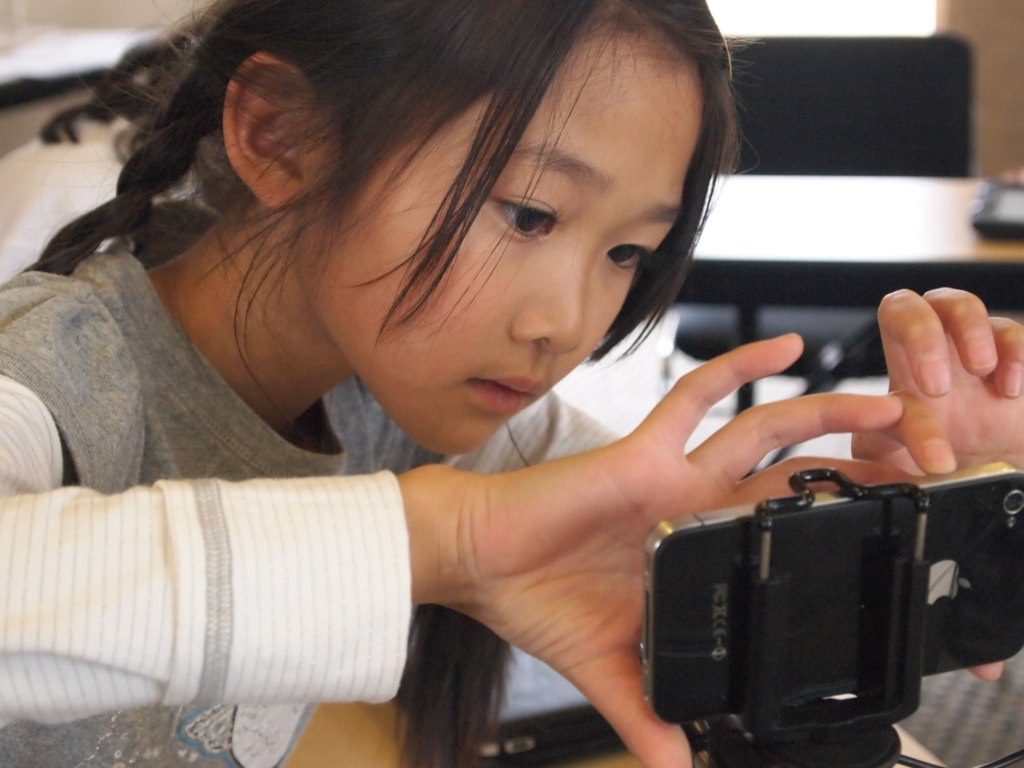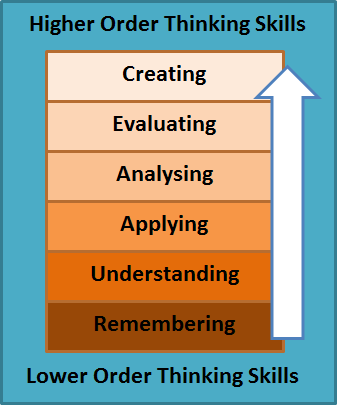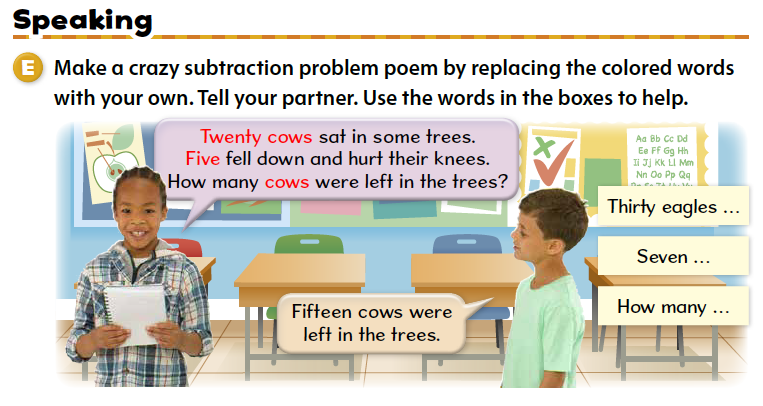 Charles Vilina and Kathleen Kampa, authors of the new Young Learners series, Oxford Discover, share teaching ideas on an important 21st Century skill: creativity.
Charles Vilina and Kathleen Kampa, authors of the new Young Learners series, Oxford Discover, share teaching ideas on an important 21st Century skill: creativity.
Creativity is intelligence having fun.”
Albert Einstein
We’re very happy to be sharing our thoughts and ideas about creativity with you, because it is such a natural and motivating skill to develop in our young learners. Creative activities are fun and engaging for our students. They take learning far beyond the simple tasks of understanding and memorizing. In fact, it is the highest order thinking skill, as Bloom’s Revised Taxonomy illustrates below:

Creativity is an essential skill (along with critical thinking, collaboration, and communication) that students need in order to be successful in the 21st Century. Creative students are better at making changes, solving new problems, expressing themselves through the arts, and more.
How important is creativity?
In one of his TED talks, education scholar Sir Ken Robinson says:
Creativity now is as important in education as literacy. We should treat it with the same status.”
Creativity is a natural ability that is found in every young learner. Unfortunately, traditional classrooms don’t always value creativity, and sometimes even hold it back. Our role as teachers is to nurture creativity at every opportunity.
Consider the following:
- Creativity develops when students are able to analyze the information they’ve learned, make new connections with that information, come up with new ideas, and evaluate their choices.
- To nurture creativity, students need the freedom to offer ideas and express themselves without judgment. In a creative classroom, all contributions from students are welcomed.
- Creativity requires the courage to make mistakes. Sir Ken Robinson states, “If you’re not prepared to be wrong, you’ll never come up with anything original.”
- Creativity and innovation go hand-in-hand. David Hughes, founder of Decision Labs and professor at UNC Chapel Hill, feels that innovation is essential for our global economy.
What are the qualities of a creative classroom?
- Teachers and students ask open-ended questions that encourage curiosity and creativity.
- Students brainstorm as many ideas as possible without fear of being judged or being wrong. Students then go on to choose the best ideas and improve upon them.
- Students demonstrate creativity not only individually, but with partners and in small groups. Ideas are generated and assessed collaboratively.
- Students lead the learning and work together to complete projects. These projects help students take the information they have learned and present it in new and creative ways.
How can you nuture creativity in your classroom?
Let’s look at some specific ways to nurture creativity in your classroom, starting with one of the building blocks of language learning:
Phonics
Learning about letter shapes and names can be creative! When your young learners are introduced to letters, try this activity to build their creativity. Write the letters one by one on the board and ask the following questions:
Can you make the letter _(b)_ with your fingers? With your hands? With your whole body? With a partner?
When you first do this task, you might model how students could do this. Think out loud. Let’s see. Letter b is round and straight. How about like this? Or like this? Then your students are ready to try their own ideas.
Words
Vocabulary words can be taught in many creative ways. For example, verbs such as walk, tiptoe, and skate can be learned more deeply by inviting students to move in creative ways. Questions might include:
- Show me what it’s like to walk in deep snow. Show me how you might walk on hot sand.
- Imagine that you’re tiptoeing past a sleeping polar bear.
- We’re on a frozen lake in Antarctica. Let’s skate with the penguins!
As you can see, creativity and imagination are closely related.
Other words such as nouns and adjectives can be presented creatively through facial expressions and body language, through movement, and even through dramatic skits.
Grammar
Grammar is often considered to be a logical and unimaginative part of English. However, grammar can be very creative as it is expressed in songs, poetry, and storytelling. Look for opportunities to build creative skills along with grammar skills.
Here’s a fun and creative way to teach not only grammar and speaking skills, but math as well! It’s taken from Oxford Discover Student Book 2, Unit 8:

The above activity combines the logical thinking from math with the imaginative thinking from poetry. Students have a great time substituting the animals and numbers in the poem with their own creative ideas, while at the same time presenting a logical math problem.
Big Questions
Oxford Discover offers an inquiry-based approach to learning that allows students to consider big questions with many answers. Students are allowed to come up with their own additional questions. This process is creative as well as motivating for students.
Consider this Big Question from Oxford Discover Student Book 3: How do people have fun?
Students explore the many ways that people have fun around the world. The discussion may turn to the subject of celebrations. Students may explore the following questions:
- What is a celebration?
- What are some ways that people celebrate around the world?
- What do people celebrate in your area? How do they celebrate?
- What is needed to make a celebration successful?
As students explore these questions and find answers, they process the information by analyzing and evaluating what they have learned. Finally, they should be given an opportunity to create.
One suggestion is to get students working together to plan a celebration. They must determine:
- What are we celebrating?
- What is our celebration called?
- Who is invited?
- How will we celebrate?
- What will we need to prepare?
As students plan, they also create. Students might create a poster, gather materials for their celebration, or even write a short play. Finally, they share what they have planned with the rest of the class.
In summary
A creative classroom is a joyful and motivating place where children feel empowered to learn, where all ideas are welcomed, and where learning is deep and meaningful. Children who are allowed to be creative are better learners, and they are more aware of their own learning styles. Creativity is a lifelong skill that our students will take with them into their adult lives to solve problems and help build a better world.
We’d like to conclude with a powerful quote from Robert Fisher in his IATEFL address entitled, “Expanding Minds: Developing Creative Thinking in Young Learners”:
What promotes creativity is a questioning classroom where teachers and pupils value diversity, ask unusual and challenging questions; make new connections; represent ideas in different ways – visually, physically and verbally; try fresh approaches and solutions to problems; and critically evaluate new ideas and actions.”
Thank you, and happy teaching!
Would you like more practical tips on developing 21st Century skills in your children? Visit our site on Teaching 21st Century skills with confidence for free video tips, activity ideas and teaching tools.
Sign up for a free webinar with Charles Vilina and Natasha Buccianti on How to use creativity in the classroom on 18 and 20 March 2014.


[…] Creativity in the young learner classroom. […]
Reblogged this on hungarywolf.
Reblogged this on iamlearningteaching and commented:
It’s about how to develop creativity in you YL classroom. The whole theory is applicable to adults I’d say)
[…] Creativity in the young learner classroom | Oxford University Press […]
[…] Charles Vilina and Kathleen Kampa, authors of the new Young Learners series, Oxford Discover, share teaching ideas on an important 21st Century skill: creativity. […]
[…] Charles Vilina and Kathleen Kampa, authors of the new Young Learners series, Oxford Discover, share teaching ideas on an important 21st Century skill: creativity. […]
[…] “ Charles Vilina and Kathleen Kampa, authors of the new Young Learners series, Oxford Discover, share teaching ideas on an important 21st Century skill: creativity.” […]
[…] Charles Vilina and Kathleen Kampa, authors of the new Young Learners series, Oxford Discover, share teaching ideas on an important 21st Century skill: creativity. […]
[…] Charles Vilina and Kathleen Kampa, authors of the new Young Learners series, Oxford Discover, share teaching ideas on an important 21st Century skill: creativity.Creativity is intelligence having f… […]
[…] Charles Vilina and Kathleen Kampa, authors of the new Young Learners series, Oxford Discover, share teaching ideas on an important 21st Century skill: creativity. […]
[…] Charles Vilina and Kathleen Kampa, authors of the new Young Learners series, Oxford Discover, share teaching ideas on an important 21st Century skill: creativity.Creativity is intelligence having f… […]
[…] Description […]
[…] Charles Vilina and Kathleen Kampa, authors of the new Young Learners series, Oxford Discover, share teaching ideas on an important 21st Century skill: creativity.Creativity is intelligence having f… […]
Open ended questions are really good, I’ve had great success with my grade two Korean elementary students with this. But…your ideas about creative activities are…well come on. Your ideas are charades, drawing and colouring a poster, and a role-play. That’s hardly ground breaking ESL thinking.
[…] [2] https://teachingenglishwithoxford.oup.com2014/03/03/creativity-in-the-young-learner-classroom/ […]